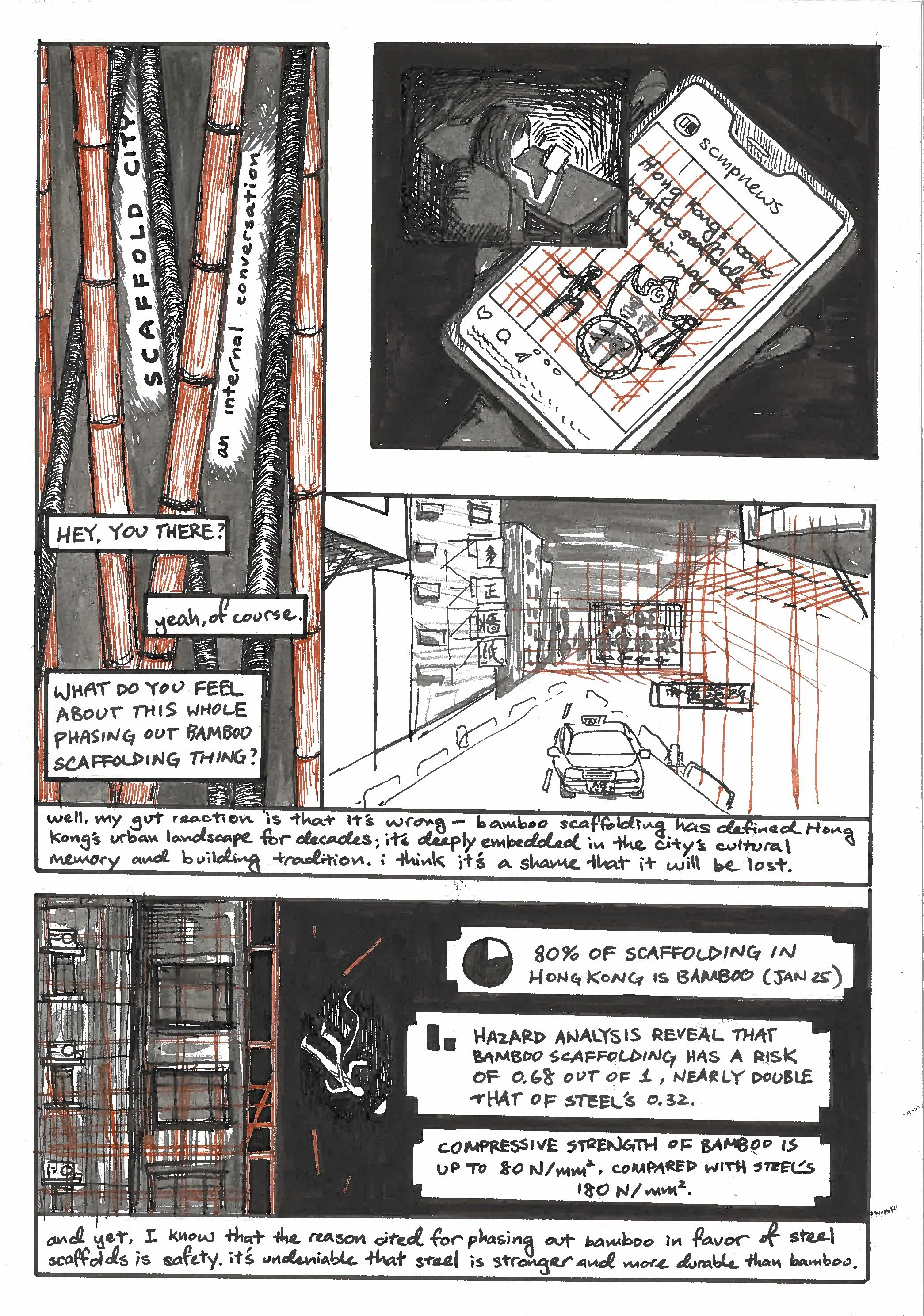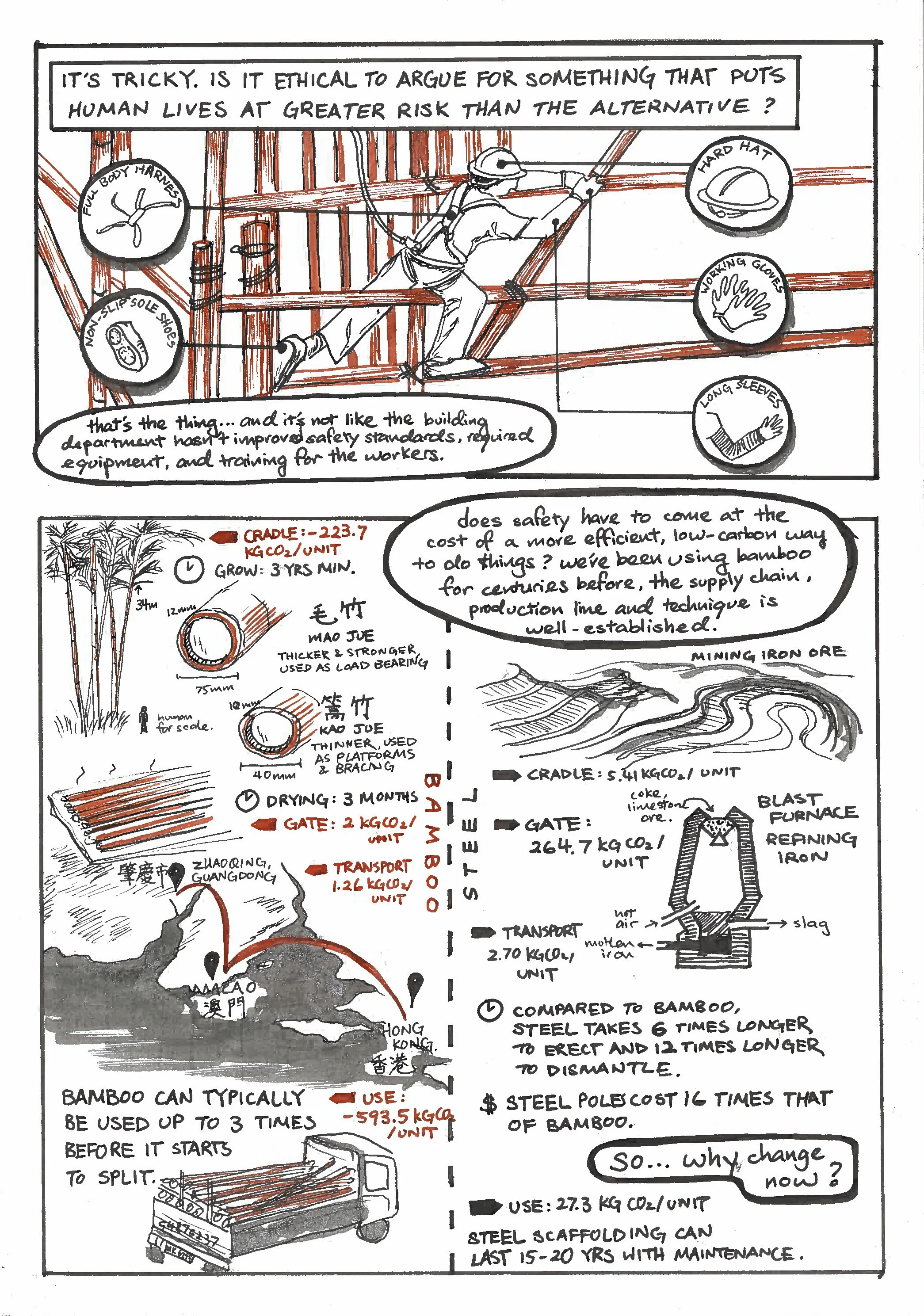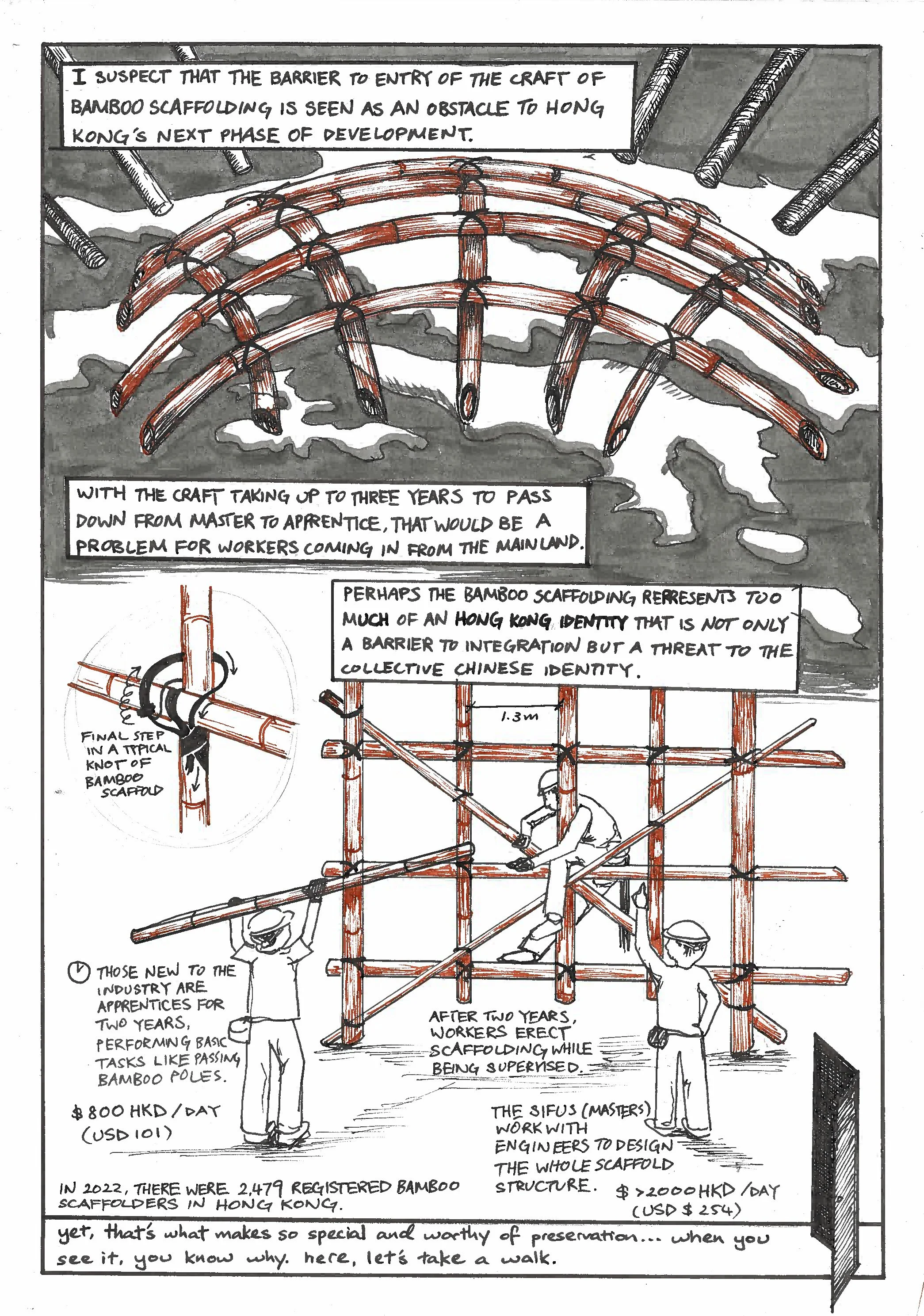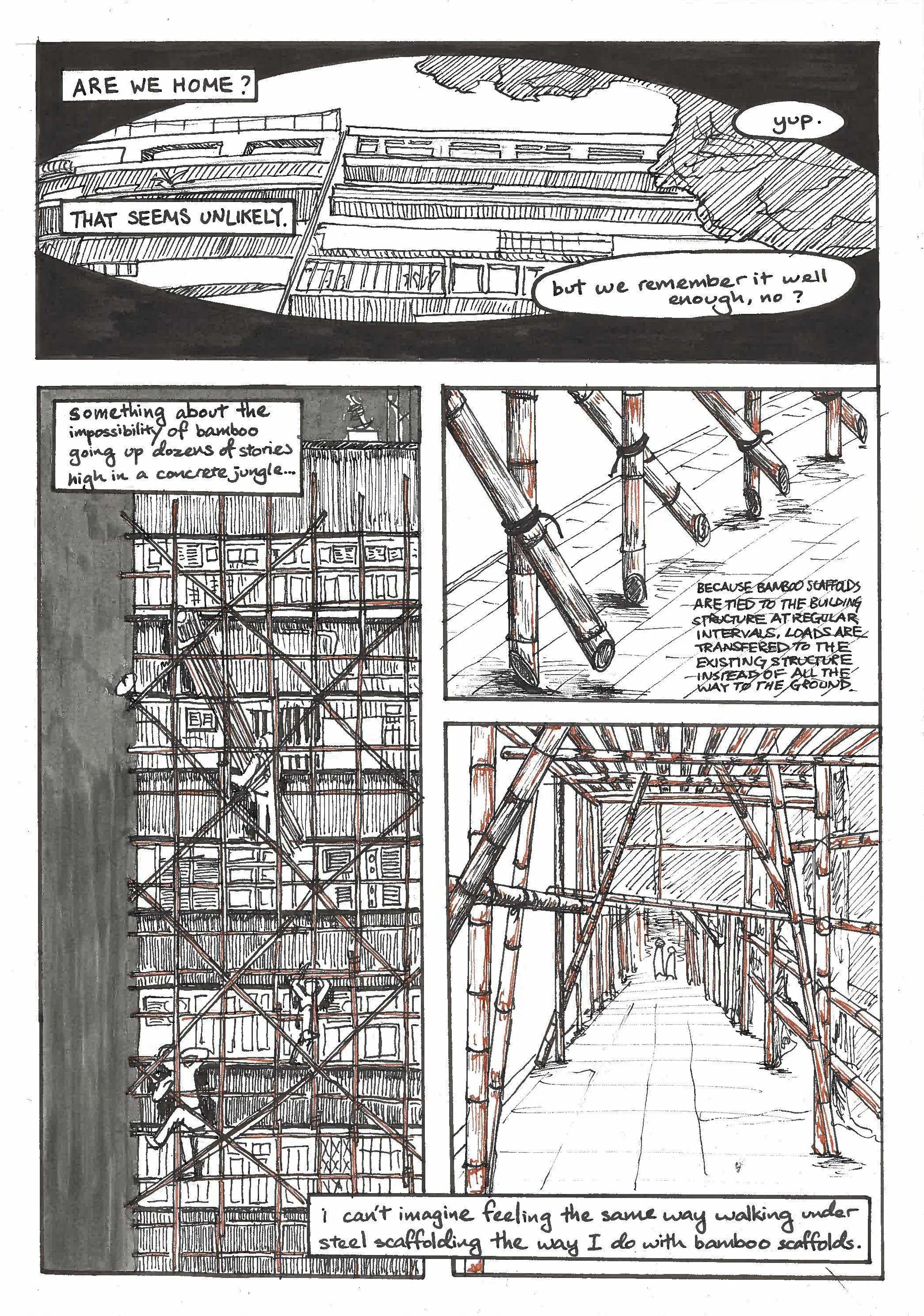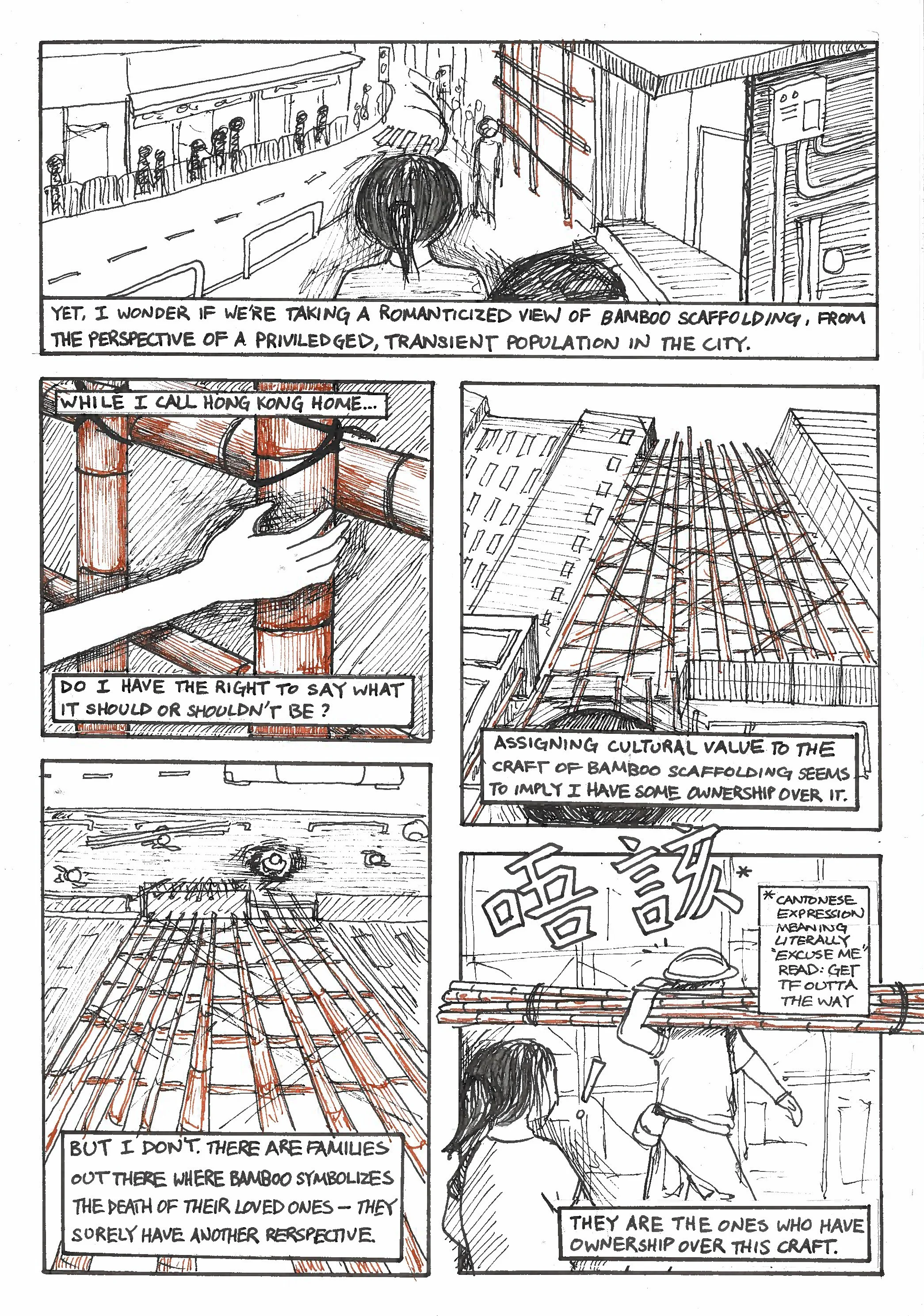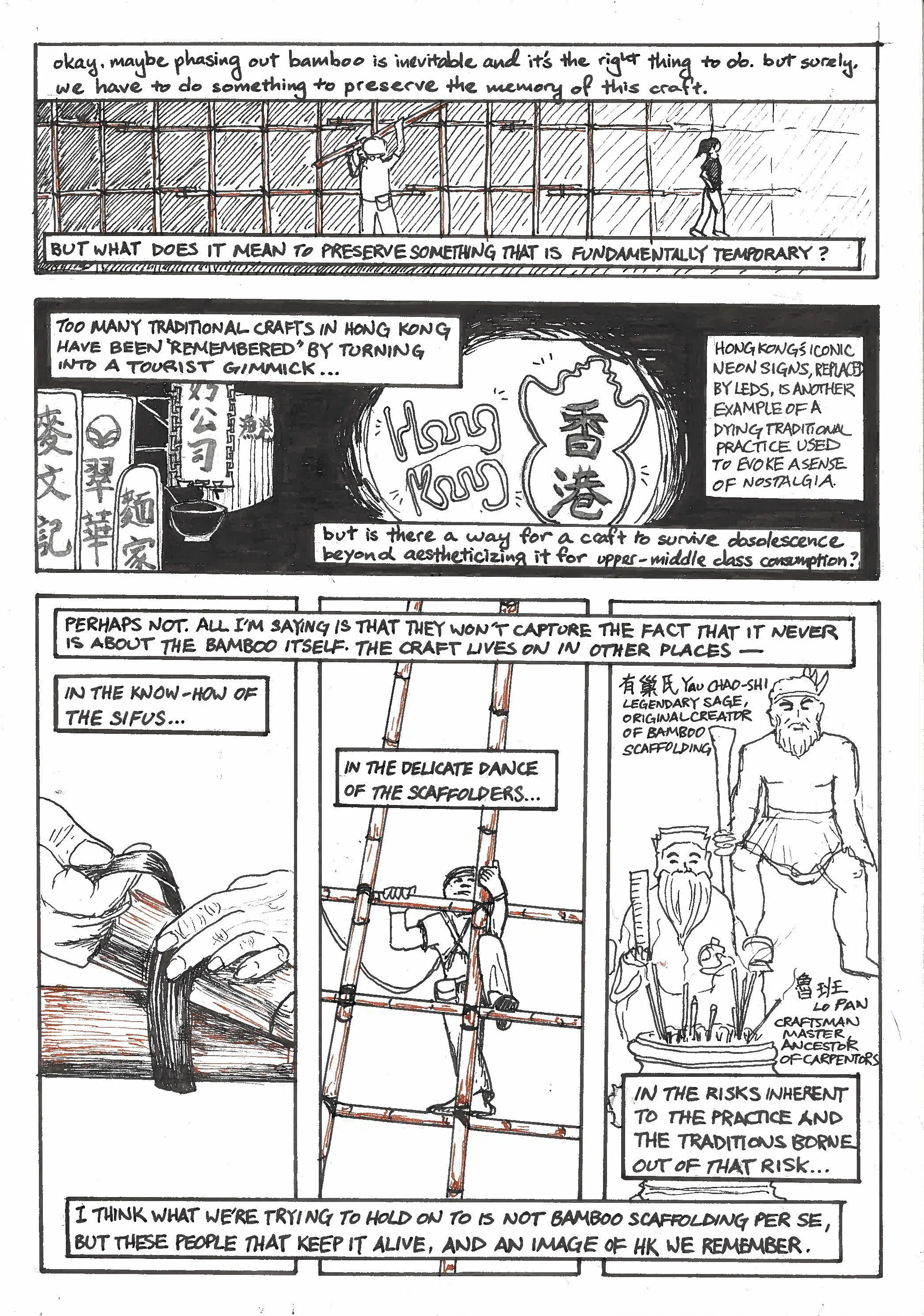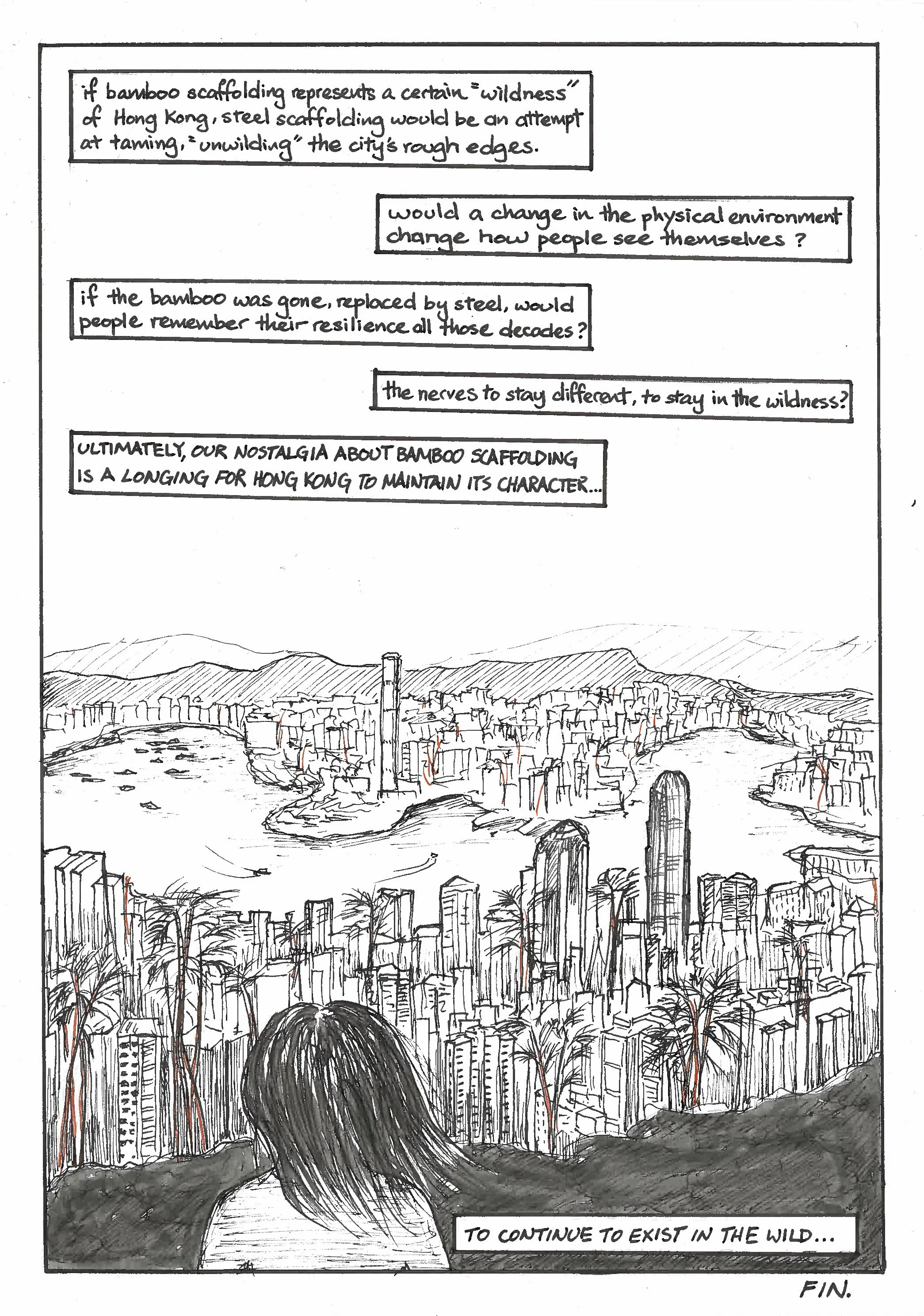Scaffold City
by Lindsay Hu
Lindsay Hu (胡⼒臻) is a candidate for the Master of Architecture (MArch) program. She is interested in how building science informs design, and how design becomes realized through social and economic forces.
Prior to joining MIT, Lindsay completed a Bachelor of Science in Civil Engineering at Duke University. She is from Taipei and grew up in Hong Kong.
In March 2025, the Hong Kong government released a statement expressing their intention to phase out bamboo scaffolding in favor of steel scaffolding. An age-old practice in Chinese construction, bamboo scaffolding is no longer practiced on a large scale in China with the exception of Hong Kong. A city that has undergone many transitions of power, Hong Kong was returned to Chinese sovereignty in 1997 after 99 years of British rule. Thirty years after the Handover, Hong Kong is facing unprecedented changes to its way of life as the Chinese government takes steps to integrate Hong Kong into Chinese society and economy. This graphic novella is an attempt at organizing my conflicting feelings towards the recent decision about phasing out bamboo scaffolding. I consider the choice of steel over bamboo from the functional perspectives of safety, cost, and environmental impact, and speculate on the sociopolitical motives behind this shift. I also reflect on the tangible impact the texture of bamboo has on the urban experience, the value proposition I am making by expressing preference for bamboo scaffolding, and my own positionality that influenced what I value. Ultimately, what’s at stake is not just the scaffolding itself, but the character of the city and its people. I argue that Hong Kong has a “wildness” - a unique ability to stay different from homogenizing forces throughout its history, yet it is not clear whether, with the loss of bamboo scaffolding, this will continue to be the case.
